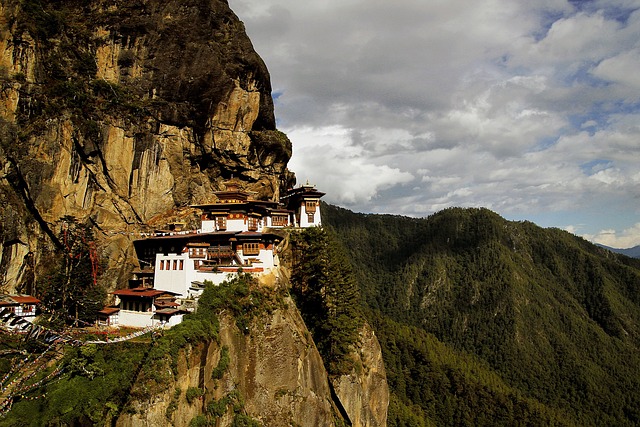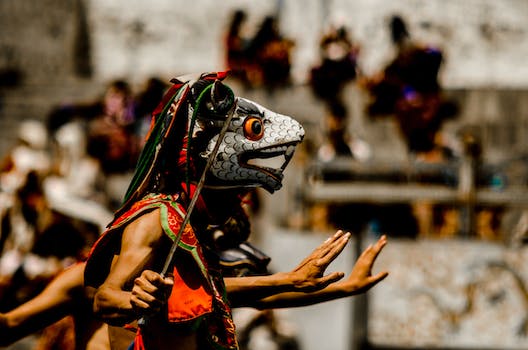Table of Contents
“Experience the Magic of Bhutan!”
Bhutan is a small, landlocked country located in the Eastern Himalayas between India and China. It is known for its unique culture, stunning landscapes, and its commitment to environmental conservation. Bhutan is a Buddhist kingdom, and its people are deeply devoted to their faith. The country is also known for its Gross National Happiness Index, which measures the overall wellbeing of its citizens. Bhutan is a beautiful and fascinating country, and it is well worth a visit.
Exploring Bhutan’s Unique Culture and Traditions

Bhutan is a small, landlocked country nestled in the Himalayas between India and China. It is known for its unique culture and traditions, which have been preserved for centuries.
Bhutanese culture is heavily influenced by Buddhism, which is the official religion of the country. Buddhism is deeply embedded in the daily lives of the Bhutanese people, from their spiritual beliefs to their traditional dress. The Bhutanese people are known for their strong sense of community and hospitality, and visitors to the country are often welcomed with open arms.
The traditional dress of Bhutan is known as the gho and kira. The gho is a knee-length robe for men, while the kira is an ankle-length dress for women. Both garments are made of bright, colorful fabrics and are often decorated with intricate patterns. The traditional dress is worn for special occasions and is a symbol of Bhutanese culture and identity.
The Bhutanese people are also known for their unique cuisine. The national dish is called ema datshi, which is a spicy dish made with chilies and cheese. Other popular dishes include momos (dumplings), jasha maroo (spicy chicken stew), and phaksha paa (pork with chilies).
Bhutan is also home to a variety of festivals and celebrations. The most important of these is the Tsechu, which is held in honor of Guru Rinpoche, the founder of Buddhism in Bhutan. During the festival, people gather to watch masked dances and listen to religious teachings. Other popular festivals include the Paro Tshechu, the Thimphu Tshechu, and the Punakha Drubchen.
Bhutan is a unique country with a rich culture and traditions that have been preserved for centuries. From its traditional dress to its delicious cuisine, Bhutan is a place that is sure to delight any traveler.
Exploring Bhutan’s Natural Wonders and Wildlife
Bhutan is a small, landlocked country nestled in the Himalayas between India and China. It is known for its stunning natural beauty and rich wildlife. From snow-capped mountains to lush forests, Bhutan is a paradise for nature lovers.
The country is home to a variety of wildlife, including the rare snow leopard, red panda, and Bengal tiger. Bhutan is also home to a wide variety of birds, including the endangered white-bellied heron. The country is also home to a variety of reptiles, amphibians, and fish.
Bhutan is also known for its stunning landscapes. The country is home to some of the world’s highest peaks, including Mount Everest. The country is also home to a variety of glaciers, rivers, and lakes. Bhutan is also home to a variety of forests, including the temperate broadleaf and mixed forests of the Himalayas.
Bhutan is also home to a variety of national parks and protected areas. These areas are home to a variety of wildlife, including the endangered black-necked crane. The country is also home to a variety of plants, including the national flower, the blue poppy.
Bhutan is a paradise for nature lovers. From its stunning landscapes to its rich wildlife, Bhutan is a must-visit destination for anyone looking to explore the natural wonders of the world.
The Impact of Bhutan’s Gross National Happiness Index
Bhutan’s Gross National Happiness (GNH) Index is a revolutionary concept that has been gaining traction in recent years. The GNH Index is a holistic approach to measuring the well-being of a nation, taking into account not only economic indicators, but also environmental, cultural, and psychological factors. This approach has been embraced by Bhutan, a small country nestled in the Himalayas, and has become a model for other nations to follow.
The GNH Index has had a profound impact on Bhutan and its citizens. It has shifted the focus of the government away from economic growth and towards the well-being of its people. This has resulted in a number of positive changes, such as increased access to healthcare, improved education, and greater protection of the environment. The GNH Index has also encouraged the government to invest in social programs, such as free healthcare and education, which have improved the quality of life for many Bhutanese citizens.
The GNH Index has also had a positive impact on Bhutan’s economy. By focusing on the well-being of its citizens, the government has been able to attract more foreign investment and create jobs. This has resulted in an increase in GDP and a decrease in poverty.
The GNH Index has also had a global impact. It has inspired other countries to adopt similar approaches to measuring the well-being of their citizens. This has resulted in a greater focus on social and environmental issues, as well as an increased emphasis on the importance of happiness and well-being.
Overall, Bhutan’s Gross National Happiness Index has had a positive impact on the country and its citizens. It has shifted the focus of the government away from economic growth and towards the well-being of its people. It has also had a global impact, inspiring other countries to adopt similar approaches to measuring the well-being of their citizens.
Exploring Bhutan’s Unique Architecture and Landscapes
Bhutan is a small, landlocked country nestled in the Himalayas between India and China. It is known for its unique culture, stunning landscapes, and incredible architecture. From ancient fortresses to modern monasteries, Bhutan’s architecture is truly one-of-a-kind.
The most iconic example of Bhutanese architecture is the dzong, a fortress-like structure that is often used as a monastery or government building. These structures are typically built on a hilltop and feature large courtyards, ornate temples, and tall walls. The most famous dzong is the Paro Dzong, which was built in 1644 and is now a UNESCO World Heritage Site.
Bhutan is also home to many beautiful monasteries, which are often perched atop mountains or perched on the edge of a cliff. These monasteries are often decorated with colorful prayer flags and feature intricate carvings and statues. The most famous monastery is the Tiger’s Nest Monastery, which is located in the Paro Valley and is said to be the birthplace of Buddhism in Bhutan.
Bhutan’s landscapes are just as impressive as its architecture. The country is home to lush forests, snow-capped mountains, and crystal-clear rivers. The most famous landscape is the Tiger’s Nest Monastery, which is perched on the edge of a cliff and offers stunning views of the valley below.
Bhutan is a truly unique country with a rich culture and stunning architecture and landscapes. From ancient fortresses to modern monasteries, Bhutan has something for everyone. Whether you’re looking for a peaceful retreat or an adventure-filled journey, Bhutan is the perfect destination.
Exploring Bhutan’s Unique Culture and Traditions
Bhutan is a country deeply rooted in its cultural heritage, offering a rich tapestry of traditions that have been carefully preserved over centuries. From colorful festivals, like the Tshechu, where masked dances honor Bhutanese deities, to the art of archery, Bhutan’s national sport, these traditions are not just relics of the past but integral parts of everyday life.
Buddhism plays a central role in shaping Bhutan’s identity, influencing everything from daily customs to the country’s values. Visiting monasteries, like the iconic Tiger’s Nest Monastery (Paro Taktsang), offers a glimpse into the spiritual devotion that permeates Bhutanese culture. The practice of meditation and the observance of Buddhist rituals are woven into the fabric of society, with many Bhutanese following a lifestyle guided by compassion, respect for nature, and mindfulness.
The Bhutanese concept of Driglam Namzha (a code of etiquette) governs how people dress, speak, and interact with one another, ensuring that their cultural values are passed down through generations. The traditional dress, gho for men and kira for women, is not only a symbol of national pride but also mandatory in certain public spaces, reflecting the country’s emphasis on preserving its heritage.
Exploring Bhutan’s Natural Wonders and Wildlife
Bhutan is often described as the “Last Shangri-La”, thanks to its breathtaking natural beauty and commitment to environmental conservation. This small Himalayan kingdom is home to a variety of ecosystems, from snow-capped mountains to lush valleys and dense forests, offering some of the world’s most stunning landscapes.
The country’s commitment to conservation is evident in the fact that over 70% of its land area is forested, with many areas designated as national parks and nature reserves. Bhutan’s focus on maintaining its natural environment has led to a wide range of biodiversity, making it a haven for wildlife lovers. Visitors can explore the Royal Manas National Park or Jigme Dorji National Park, where they may spot rare species like the snow leopard, Bengal tiger, and the elusive red panda.
The flora of Bhutan is equally impressive, with more than 5,400 species of plants, including over 300 medicinal plants and about 46 species of rhododendron. Bhutan’s untouched landscapes also make it ideal for outdoor adventures such as trekking and bird watching, where travelers can immerse themselves in the country’s pristine natural wonders.
The Impact of Bhutan’s Gross National Happiness Index
Bhutan is known for measuring its success not by Gross Domestic Product (GDP) but by Gross National Happiness (GNH), a unique index that emphasizes the well-being of its citizens over economic growth. This forward-thinking approach to governance reflects Bhutan’s commitment to creating a harmonious balance between spiritual, economic, and environmental priorities.
The GNH Index is based on four key pillars: sustainable development, cultural preservation, good governance, and environmental conservation. These pillars break down into nine domains, ranging from health and education to psychological well-being and community vitality.
The impact of the GNH Index on Bhutan’s society is profound. For instance, the government’s policies focus on eco-friendly practices, like being the world’s first carbon-negative country and implementing restrictions on mass tourism to protect its natural and cultural resources. The emphasis on happiness also encourages a slower, more mindful way of life, fostering strong community ties and a sense of contentment among Bhutanese people.
Exploring Bhutan’s Unique Architecture and Landscapes
Bhutanese architecture is another striking aspect of the country’s identity, seamlessly blending with its natural surroundings. From the majestic dzongs (fortresses) that serve as administrative and religious centers to traditional farmhouses, Bhutan’s buildings are characterized by their distinctive style, featuring intricate woodwork, colorful murals, and multi-tiered roofs.
Punakha Dzong, with its towering whitewashed walls and ornate wooden details, is one of the finest examples of Bhutanese architecture. It’s set at the confluence of two rivers, offering a stunning contrast of human craftsmanship and nature’s beauty. The Rinpung Dzong in Paro and Tashichho Dzong in Thimphu are other must-see architectural landmarks.
As for the landscapes, Bhutan offers some of the most dramatic views in the Himalayas. Whether you’re trekking to the high-altitude Jomolhari Base Camp or wandering through the fertile valleys of Phobjikha, Bhutan’s varied terrain is nothing short of spectacular. The country’s landscapes are not just for admiring; they are deeply intertwined with the Bhutanese way of life, supporting agriculture, spirituality, and traditional medicine.
Bhutan’s unique combination of architecture and landscapes provides visitors with a sense of timelessness, where history and nature coexist harmoniously.
Q&A
1. Where is Bhutan located?
Bhutan is located in South Asia, between India and China.
2. What is the capital of Bhutan?
The capital of Bhutan is Thimphu.
3. What is the official language of Bhutan?
The official language of Bhutan is Dzongkha.
4. What is the currency of Bhutan?
The currency of Bhutan is the Ngultrum (BTN).Bhutan is a unique and beautiful country with a rich culture and history. It is a place of natural beauty, with stunning landscapes, vibrant cities, and friendly people. Bhutan is a great destination for travelers looking for an unforgettable experience. With its commitment to Gross National Happiness, Bhutan is a place where visitors can find peace and contentment. Bhutan is a country that is worth visiting and exploring, and it is sure to leave a lasting impression on all who visit.
![]()










